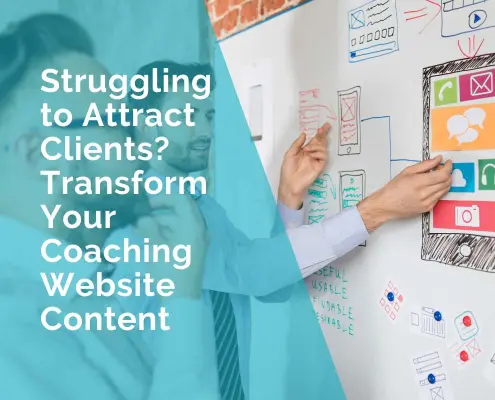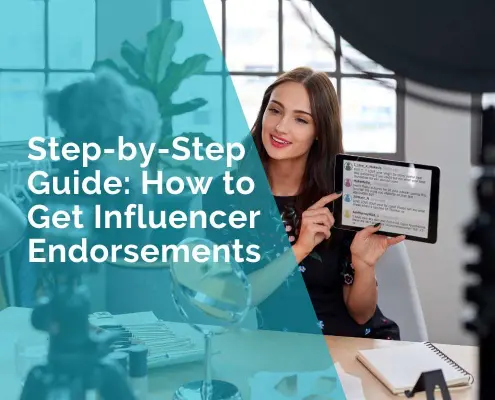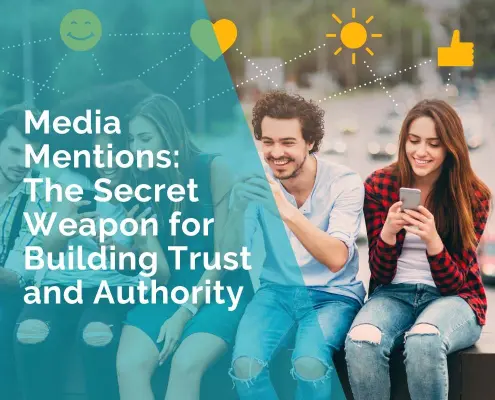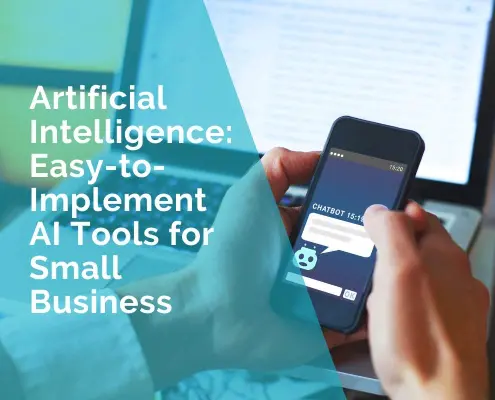Content Integrity
1. The Commonality of Generic AI Content
There’s a common trend in the world of AI-generated content, and it’s called “generic-itis.” It’s when content produced by AI falls into the same old patterns and uses the same phrases, templates, and structures. It’s not that AI is doing a bad job – it’s actually doing exactly what it’s told, which is to follow the rules and patterns it’s learned from its training data.
The result?
Loads and loads of content that all look and sound alike.
Imagine scrolling through a website or social media feed and seeing post after post that feels like a déjà vu moment. It’s not only monotonous; it’s a missed opportunity to make a memorable impression on your audience.
2. The Consequences of Blending in with the Crowd
Now, let’s talk about the consequences of being a copycat in the AI content game. When your content blends in with the crowd, a few things happen, and none of them are good:
Bland and Forgettable
Your content becomes just another drop in the vast sea of information, easily forgettable, and unlikely to make a lasting impact.
Lack of Brand Identity
Your brand’s unique voice and identity get lost in the shuffle. People won’t remember you for being different or special.
Engagement Takes a Hit
If your content doesn’t stand out, why would people bother engaging with it? Engagement metrics like likes, shares, and comments can start to dwindle.
Missed Opportunities
The biggest downside is missing out on the golden opportunities to make a real connection with your audience, build trust, and turn visitors into loyal customers.
3. Recognizing the Need for Originality
So, what’s the antidote to the Copycat Conundrum?
Recognizing the need for originality is the first step. Originality means breaking free from the templates and the “safe” path that everyone else is taking.
Think about it this way: your brand, your message, and your audience are unique. They deserve content that reflects that uniqueness. This is your chance to be the one who stands out, who makes people stop and think, “Wow, this is different!”
Originality in your AI-generated content is not just a nice-to-have; it’s a must-have.
In the next sections, we’ll explore how you can infuse creativity, personality, and your distinctive touch into your AI-generated content to turn it from mundane to magnificent. Get ready to make your content a conversation starter, not just a copycat!

Crafting Exceptional Content
1. The Importance of Creativity in AI Content Creation
Creativity isn’t just reserved for artists and poets; it’s a game-changer in the world of AI content creation too. Why? Because creativity is what makes your content pop, sparkle, and stand out in a sea of monotony. It’s like adding a splash of colour to a black-and-white canvas.
When you infuse creativity into your AI-generated content, you breathe life into it. You add personality, emotion, and a touch of magic that captivates your audience. Think about it as turning plain text into a masterpiece – it’s your unique touch that makes it remarkable.
2. Leveraging AI as a Tool for Innovation, Not Replication
Now, here’s the thing, AI isn’t a content replicator; it’s a content innovator. It can analyze mountains of data, generate suggestions, and speed up the content creation process.
However, it’s up to you to ensure that the content retains your distinct style and message. Instead of letting AI take the reins completely, think of it as a partnership where you’re the creative director, and AI is your assistant bringing your ideas to fruition.
3. The Role of Research and Planning
Here’s another secret ingredient to crafting exceptional AI content – research and planning.
Before you dive headfirst into content creation, take some time to explore your audience’s needs, preferences, and pain points. Understanding your audience is like having a treasure map – it guides you to content gold.
Research helps you uncover what topics resonate with your audience, what questions they’re asking, and what problems they need solutions to.
Armed with this knowledge, you can use AI to generate content that’s not only creative but also highly relevant.
Planning is your roadmap to success. It involves outlining your content strategy, setting goals, and deciding how AI fits into your creative process.
Think of it as the blueprint for your content journey. When you combine creativity, AI innovation, and strategic research and planning, you’re well on your way to crafting exceptional content that stands out, captivates, and leaves a lasting impression.
Nurturing Your Unique Voice
Now that we’ve laid the groundwork for crafting exceptional AI content, let’s delve into the art of nurturing your unique voice.
In this section, we’ll explore how to define your brand’s tone and style, customize AI-generated content to match your voice, and provide real-world examples of successful AI content that truly stands out.
1. Defining Your Brand’s Tone and Style
Your brand is like a person with its own personality, and that personality shines through in your content. It’s all about the tone and style you use to communicate with your audience.
Are you formal and informative, casual and friendly, or maybe a bit cheeky and playful?
Defining your brand’s tone and style is like giving your brand its own voice. It sets the stage for how you connect with your audience and how they perceive you. Think of it as your brand’s unique accent in the vast world of content.
2. Customizing AI-Generated Content to Match Your Voice
Here’s where the magic happens. AI-generated content can be a fantastic starting point, but it’s like a blank canvas waiting for your artistic touch. You don’t want it to sound like a robot; you want it to sound like you!
Customizing AI-generated content means adding your own personality, flair, and brand-specific language. It’s like dressing up a mannequin with your unique fashion sense. You take what AI gives you and make it uniquely yours.
For instance, if you’re a tech-savvy brand known for being friendly and approachable, you can infuse AI-generated product descriptions with a conversational tone.
If you’re a formal and professional law firm, you’d customize AI-generated legal content to match that serious and authoritative voice.
3. Examples of Successful AI Content That Stands Out
Let’s look at some real-world examples of brands that have mastered the art of customizing AI-generated content to nurture their unique voices:
Example 1 – “Friendly E-commerce Giant”
An e-commerce company uses AI to generate product descriptions but customizes them with a warm and friendly tone. Their descriptions don’t just list features; they tell stories about how customers can benefit from each product.
Example 2 – “Tech Innovator”
A technology blog uses AI to generate news articles but adds a layer of tech-savvy enthusiasm and insider knowledge that’s unique to their brand. They make AI-generated content sound like it’s written by tech geeks for tech geeks.
Example 3 – “The Legal Eagles”
A law firm uses AI to draft legal documents but adds their authoritative legal voice to ensure the content is precise, professional, and aligns with their brand’s reputation.
In these examples, the brands have taken AI-generated content as a starting point and then stamped it with their unique identity. They’ve understood that customization is the key to making AI content that truly stands out and connects with their audience.
As we move forward in this journey of crafting exceptional AI content, we’ll explore techniques for adding a creative twist to your AI-generated content and how to effectively incorporate visuals, videos, and multimedia to enhance your storytelling. So, get ready to take your unique voice and creativity to the next level!
Techniques for Originality
In our quest to craft exceptional AI content, it’s time to explore some techniques that will infuse your content with originality and give it that unmistakable flair.
In this section, we’ll look at how to utilize creative prompts for AI models, inject personality and emotion into your content, and find the delicate balance between AI assistance and human oversight.
1. Utilizing Creative Prompts for AI Models
Think of creative prompts as the spark that ignites your AI’s creative fire.
Instead of just asking AI to generate content on a specific topic, provide it with a creative prompt that encourages out-of-the-box thinking.
For example, instead of asking, “Write about the benefits of a healthy diet,” you could say, “Imagine you’re a nutrition guru from the future, and you’re telling people why they should eat better.”
Creative prompts help steer AI away from cookie-cutter responses and encourage it to think creatively. They open the door to unexpected ideas, unique angles, and content that surprises and delights your audience.
2. Injecting Personality and Emotion into Your Content
The heart of originality lies in injecting your personality and emotion into your content.
AI can provide you with a solid foundation, but it’s your job to add the human touch.
Share your experiences, anecdotes, and opinions. Tell stories that resonate with your audience. Don’t be afraid to show your enthusiasm, humour, or empathy.
Imagine you’re talking to a friend or having a one-on-one conversation.
Infuse that warmth and authenticity into your content.
If you’re passionate about a topic, let that passion shine through your words. Remember, people connect with content that feels real and relatable.
3. Balancing AI Assistance with Human Oversight
While AI is a powerful tool for generating content, it’s essential to strike the right balance between AI assistance and human oversight.
AI is excellent at generating ideas and drafts, but it’s not infallible. It might miss nuances, context, or the subtleties of your unique voice.
Human oversight is where you add the final polish to your content. Review and edit AI-generated content to ensure it aligns perfectly with your brand’s voice, message, and objectives.
Look for areas where you can make your content even more engaging, impactful, and emotionally resonant.
Beyond Text: Incorporating Visuals and Multimedia
The Impact of Visuals, Videos, and Graphics
We all know that a picture is worth a thousand words, and in the realm of AI content, this couldn’t be truer. Visuals, videos, and graphics have the power to transform your content from ordinary to extraordinary.
Here’s why they matter:
Immediate Engagement
Visuals grab your audience’s attention instantly. They break up the monotony of text and make your content more appealing.
Enhanced Comprehension
Complex ideas and data become easier to understand when presented visually. Infographics, charts, and diagrams can simplify intricate concepts.
Emotional Connection
Images and videos can evoke emotions and create a deeper connection with your audience. A well-chosen image can convey a feeling or tell a story in an instant.
Enhancing Engagement Through Multimedia
Now, let’s talk about the magic that multimedia can bring to your storytelling and engagement:
1. High-Quality Images
Stunning photographs related to your content can instantly capture attention and set the tone.
Example: In a travel blog, include vibrant images of exotic destinations to inspire wanderlust.
2. Engaging Videos
Videos bring your content to life, whether it’s a product demonstration, tutorial, or storytelling.
Example: An electronics company can create video reviews showcasing their latest gadgets in action.

3. Informative Infographics
Infographics simplify complex information through visuals, making it easier for readers to understand.
Example: An educational website can use infographics to explain scientific concepts or historical timelines.
4. Interactive Maps
Maps help readers visualize locations or data, making content more interactive.
Example: A real estate agency can embed maps to show property listings in a specific area.
5. Attention-Grabbing GIFs
GIFs add a touch of humor or emphasize a point in a concise, looping format.
Example: A fashion brand might use GIFs to showcase different ways to style an outfit.
6. Podcasts and Audio Clips
Audio content is ideal for storytelling, interviews, or sharing expertise.
Example: A business consultant can embed podcast episodes discussing industry trends.

7. Memorable Slideshows
Slideshows can provide a visual tour of a topic, product, or place.
Example: A restaurant can create a slideshow of its mouthwatering dishes.
8. Engrossing Animations
Animated elements can explain processes or concepts dynamically.
Example: A healthcare website can use animations to illustrate how a medical procedure works.
9. Interactive Charts and Graphs
Visual data representations make statistics and trends more digestible.
Example: A financial blog can use interactive charts to track stock market performance.

10. Customer Testimonials
Real-life testimonials or case studies add authenticity and build trust.
Example: An e-commerce site can feature customer reviews with photos and feedback.
11. Social Media Posts
Embedding social media posts can add real-time engagement and user-generated content.
Example: A fitness blog can include Instagram posts from users sharing workout progress.
12. Virtual Reality (VR) Experiences
VR offers immersive experiences, especially useful for industries like tourism or real estate.
Example: A travel agency can provide virtual tours of holiday destinations.
13. 360-Degree Photos
These photos enable readers to explore a scene from every angle.
Example: A hotel website can use 360-degree photos to showcase its luxurious suites.
14. Quizzes and Polls
Interactive elements engage readers and collect valuable feedback.
Example: A lifestyle magazine can include a personality quiz to determine readers’ fashion style.

15. Downloadable Resources
Offer downloadable e-books, guides, or templates related to your content.
Example: A marketing blog can provide a downloadable social media content calendar.
16. Live Chat or Support Widgets
Provide real-time assistance or support for users visiting your site.
Example: An e-commerce store can use a live chat widget for customer inquiries.

17. User-Generated Content Feeds
Showcase content created by your customers or community members.
Example: A fitness brand can display user-submitted workout videos and photos.
18. Virtual Tours
Ideal for real estate, hospitality, or educational institutions, virtual tours give users an immersive experience.
Example: A university website can provide a virtual campus tour for prospective students.

19. Interactive Product Demos
Let users explore and interact with your product online before making a purchase.
Example: An electronics store can offer interactive demos of smartphones and gadgets.
20. Customizable Calculators
Provide tools that allow users to calculate costs, savings, or other relevant metrics.
Example: A finance website can feature a mortgage calculator for visitors planning home purchases.
21. Informative Tables
Tables organize data or information logically and help readers quickly grasp complex details.
Example: A research report can include tables presenting survey results or comparative data.
22. Engaging Stories
Stories create a narrative that captures readers’ attention and emotionally resonates with them.
Example: A nonprofit organization can share stories of individuals positively impacted by their work.
23. Relatable Analogies
Analogies compare unfamiliar concepts to familiar ones, aiding understanding.
Example: In a tech blog, explaining blockchain as a digital ledger is like a shared Google Doc for transactions.
24. Inspiring Quotes
Quotes from experts, thought leaders, or influential figures can add credibility and inspiration.
Example: A leadership blog can include quotes from successful CEOs on leadership principles.

25. Real-World Examples
Practical examples illustrate concepts and demonstrate their application.
Example: A cooking website can provide step-by-step photos and instructions for preparing a recipe.
26. Compelling Statistics
Statistics provide data-driven evidence to support your claims, making your content more credible and persuasive.
Example: In a blog about climate change, you can include statistics on rising global temperatures and their impact on sea levels.

27. Interactive Timelines
Interactive timelines present information chronologically, allowing users to explore historical events or project timelines.
Example: A history website can feature an interactive timeline covering key events of a particular era.
Crafting exceptional content is about using AI as a helpful tool, not a copycat machine. It’s about being creative and standing out from the crowd. So, go ahead and create content that shines, tells your story, and engages your audience. Your uniqueness is your strength, and with AI’s assistance, you can make your content truly exceptional.
Frequently Asked Questions about Creating Engaging AI Content
What is AI content creation, and how does it work?
AI content creation is the process of using artificial intelligence algorithms and tools to generate written or multimedia content automatically. It works by training AI models on vast datasets of text or media to produce content that mimics human-generated material.
Why should I use AI for content creation?
AI can save time and effort by automating content generation tasks. It can also help scale content production, maintain consistency, and provide data-driven insights for content optimization.
How do I ensure the AI-generated content is engaging and not robotic?
To make AI content engaging, review and edit it for a human touch. Inject personality, storytelling elements, and creativity into the content. Customizing AI models can also help generate content that aligns with your brand’s style.
Can AI generate content for any industry or niche?
AI can generate content for a wide range of industries and niches. However, fine-tuning AI models and providing specific input data related to your industry can improve the relevance and quality of the content.
What types of content can AI create?
AI can create various types of content, including articles, blog posts, product descriptions, social media posts, marketing emails, email signatures, video scripts, and more. It can also generate visuals, such as images and charts.
How can I measure the effectiveness of AI-generated content in terms of engagement?
You can measure engagement by tracking key metrics such as click-through rates, social media shares, comments, and time spent on pages. A/B testing can also help determine which AI-generated content performs best.
Can AI help with content personalization to increase engagement?
Yes, AI can analyze user data to personalize content recommendations, product suggestions, and even the content itself based on user preferences and behavior, which can enhance engagement.
What are some best practices for combining AI and human content creation for maximum engagement?
A best practice is to use AI for generating initial drafts and ideas, then have human content creators review, edit, and add a personal touch. Collaboration between AI and human creators often yields the best results.
Is AI content creation suitable for small businesses and individuals?
Yes, AI content creation tools are accessible to small businesses and individuals. Many platforms offer affordable AI-generated content services, making it accessible to a wide range of users. However, customizing the content to align with your unique brand voice is essential for maximum engagement.
 Ivana Katz from Websites 4 Small Business is an award winning web designer who builds websites that build your business. She provides unbeatable web design services to fit your budget.
Ivana Katz from Websites 4 Small Business is an award winning web designer who builds websites that build your business. She provides unbeatable web design services to fit your budget.
The end result? Professional, custom-made sites that give your business the extra oomph it needs to stand out from the competition and make an impact.
Whether you’re a brand-new business or an established one ready to improve your digital presence, Ivana makes it easy to get your business online very quickly. Her websites are professional, tailored to fit your budget, and give your business a serious boost.
Download your FREE copy of “Ultimate Website Design Secrets Blackbook – 10 Bulletproof Strategies for Designing an Outrageously Successful Website”












